This travel wiki page of Austria will help guide travelers with quick and relevant information to consider when planning and visiting the country. It is difficult to find all the relevant information on Austrian culture, safety, travel restrictions, and things to do, so we summarize it all here. If anything is stale or outdated, please let us know! Let’s dive in and explore more high-level information as an Austria trip planner.
Last updated September 12th of 2023.
Table of contents
National Information & Culture
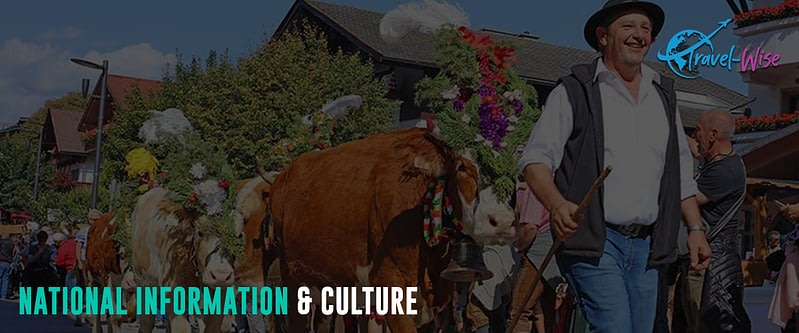
Austria, formally the Republic of Austria, lies in the Eastern Alps of Central Europe. It shares land borders with Germany, Czechia, Slovakia, Hungary, Slovenia, Italy, Switzerland, and Liechtenstein. Austria is a federation of nine provinces, with Vienna as the capital and the most populous city and region. Being part of the European Union and the Schengen Area, the legal tender is Euro (€).
Austria has high living standards, having the 17th highest nominal GDP per capita. Moreover, Austria ranks 25th in the 2021 Human Development Index worldwide.
When visiting Austria, a traveler must know several cultural nuances and details to appreciate the local way of life. Austrians are known for their punctuality. Being late for appointments or meetings is considered disrespectful. Also, do not refer to an Austrian as a German. Be sensitive to the local culture and try not to compare the two countries.
Visit Austria’s official tourism website for more information and details when planning your trip.
Special Travel Considerations

Each country and destination has rules and regulations that every traveler must consider. Hence, check the following considerations for hassle-free travel to Austria.
Covid-19 Policy
All travelers to Austria can enter the country without any coronavirus-related restrictions. There are no post-arrival testing or restrictions on public transport for all travelers to Austria. However, the Covid-19 protocol of Austria may vary over time with the evolution of the pandemic. Therefore, check the latest coronavirus information or visit the Federal Ministry of Health website when planning your trip.
Insurance
Travel insurance is mandatory for travelers applying for a Schengen Visa in Austria. Specifically, insurance coverage has to be at least €30,000 and valid for all the Schengen States.
While travel insurance is optional for other nationals, it is strongly recommended for all visitors to Austria. Preferably, it must cover emergency medical treatment, including Covid-19, repatriation, and evacuation. Travel insurance can protect you against the inconvenience of injury, medical emergencies, theft, and flight cancellations. In addition, it is a comprehensive protection in case anything goes wrong with your trip.
Visa Information
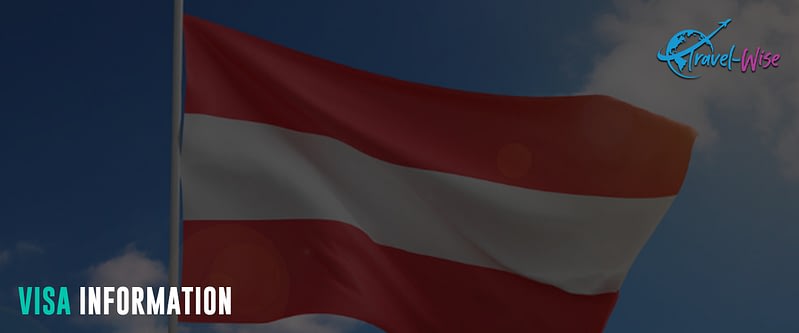
Generally, citizens of European Union states, the European Economic Area (EEA), Switzerland, and many other countries have freedom of movement in Austria. In addition, nationals from the UK, US, Canada, Australia, New Zealand, Japan, and some other countries do not require a visa and can stay in Austria for up to 90 days. Meanwhile, all other nationals must secure a type C Schengen visa from the nearest Austrian Consular Office or Representations abroad. Travelers can also submit their visa applications to Austrian Application Centers. Moreover, third-country nationals holding any Schengen visa can enter Austria without requiring another Austrian visa.
In addition to a visa, visitors from most European states need a valid identity card to enter Austria. Meanwhile, other travelers need a passport with at least six months of validity.
Please visit the Federal Ministry of the Interior website to check whether you require a visa.
ETIAS
The European Union will implement European Travel Information and Authorisation (ETIAS) starting in 2024. It is to boost security across the Schengen zone. ETIAS will be a mandatory requirement for visitors from visa-exempt countries.
ETIAS is a travel permit or a visa waiver program in which all visitors, regardless of age, traveling to the Schengen counties must apply individually at least 96 hours before departure. It will be a multiple-entry permit valid for three years or until the passport expires (whichever comes first) and can be used to visit all ETIAS member countries.
As of this writing, the European Travel Information and Authorisation System (ETIAS) is currently not operating and does not accept applications for travel authorizations. However, applicants can apply via an official website or app for mobile devices before ETIAS is implemented. The date travelers can apply for ETIAS will be published on this website, Europa Home Affairs. You can also find more information on the official ETIAS website of the European Union.
Popular Attractions
Austria is a captivating travel destination known for its stunning Alpine landscapes, rich cultural heritage, and charming cities. Visitors can explore historic architecture in Vienna, ski in the Austrian Alps, and hike some of the country’s scenic destinations that blend cultural sophistication.
Vienna
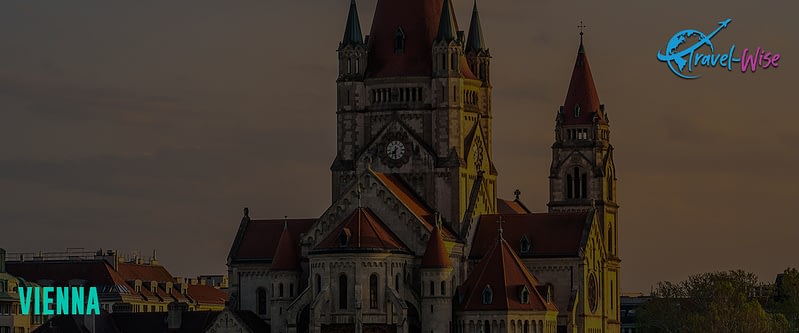
Vienna is Austria’s enchanting capital, the perfect gateway to the country’s rich cultural heritage and breathtaking landscapes. Steeped in imperial history, Vienna offers a captivating blend of old-world charm and contemporary vibrancy. Must-visit sites include the magnificent Hofburg Imperial Palace, a testament to Habsburg grandeur, and the stunning Schönbrunn Palace with its opulent gardens. The Vienna State Opera, renowned for its world-class performances, and St. Stephen’s Cathedral, an iconic Gothic masterpiece, are also essential stops.
Vienna is also home to numerous museums, including the Kunsthistorisches Museum, the Natural History Museum, and the Albertina Museum. Moreover, Vienna’s Christmas markets are also legendary. A must-stop for travelers during the holiday season includes Christkindlmarkt on Rathausplatz (the square in front of the town hall), one of the world’s biggest and oldest markets.
With its central location, Vienna is the perfect starting point for exploring Austria’s diverse treasures, making it an ideal destination for both culture seekers and adventurers alike.
Schönbrunn Palace

Schönbrunn Palace, a UNESCO World Heritage site, is one of Europe’s most magnificent Baroque complexes. Dating back to 1569, the palace boast a rich history when it came under Habsburg ownership. As the summer residence of the Habsburg emperors from the 1700s until 1918, Schönbrunn played a central role in Austrian and European court life. Notable figures like Maria Theresa, Emperor Franz Joseph, and Empress Elisabeth once called it home.
Today, visitors can explore 40 lavishly furnished rooms on a guided tour, each with its own story. Highlights include the Blue Chinese Salon, Porcelain Room, Vieux-Laque Room, and Gobelin Salon, showcasing exquisite Brussels tapestries.
Beyond the palace, the Schönbrunn Palace Park is a captivating destination offering year-round unrestricted access to visitors. The park features impressive fountains, statues, monuments, trees, flowers, and the iconic Gloriette. For an admission fee, visitors can also explore additional attractions within the palace park, including the Imperial Carriage Museum, Crown Prince Garden, Orangery Garden, Maze & Labyrinth, Zoo, Palm House, and Desert Experience House.
Hofburg Imperial Palace
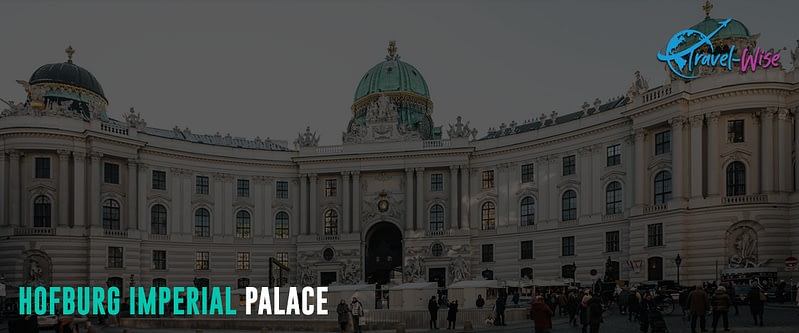
Vienna’s Hofburg Imperial Palace is a historic masterpiece that served as the official winter royal residence of the Habsburgs until World War I. Built-in the 13th century and underwent multiple expansions, the over 300,000 square meters palace complex includes the stables, library, and the renowned Spanish Riding School. Visitors can also explore various on-site museums and glimpse into the former royal apartments, along with the dazzling Imperial Silver Collection. Today, it remains significant as the official seat of the Austrian head of state, the federal president.
Ringstrasse, Vienna
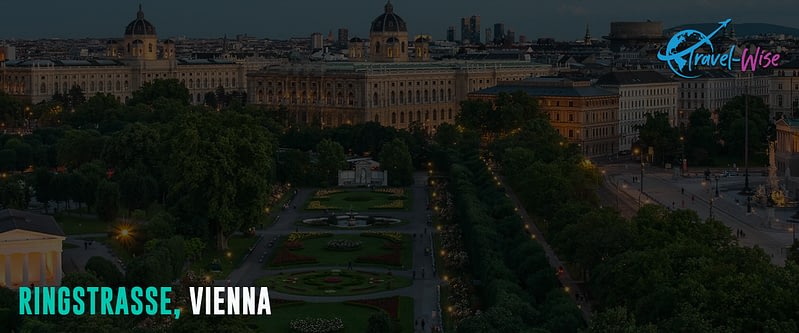
Vienna’s Ringstrasse is a circular boulevard encircling the historical center, separating the Hofburg and Stephansdom districts from the rest of the city. It was created in the mid-19th century after the demolition of the city walls, with a length of 5.3 kilometers, and lined with some of Vienna’s most iconic buildings. Emperor Franz Joseph’s directive in 1857 led to the construction of this monumental boulevard.
The Ringstrasse is a testament to Historicism, a pluralistic architectural style blending influences from previous eras, including Renaissance, Baroque, and Gothic. It houses an array of majestic structures, including the Hofburg Palace, Rathaus (City Hall), Vienna State Opera, Parliament, Burgtheater, University, Kunsthistorisches Museum (Museum of Art History), and the Naturhistorisches Museum (Museum of Natural History).
Vienna’s Ringstrasse serves multiple functions, from a prominent traffic artery to a picturesque promenade and shopping street. It remains a witness to historical events and hosts various demonstrations and events, adding to its vibrant legacy as one of the most beautiful boulevards in the world.
Today, travelers can hop on a tour bus or a local tram to see the Ring in all its finery. There are also cycle paths and footpaths for those who fancy walking down the boulevard.
St. Stephen’s Cathedral, Vienna
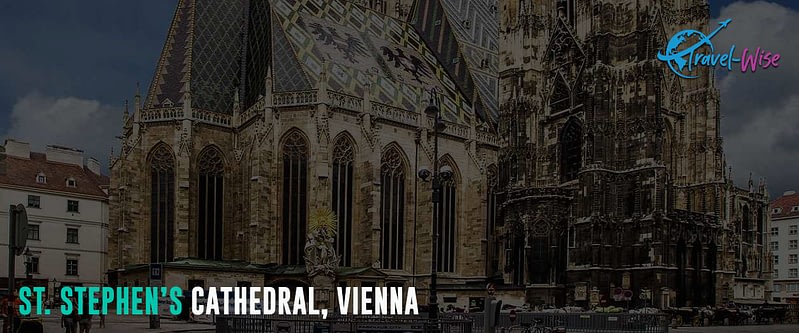
St. Stephen’s Cathedral (Stephansdom) is an imposing Gothic landmark in Vienna’s old city center. It boasts a rich history and breathtaking architecture, featuring a 136-meter South Tower. The cathedral also features colorful roof tiles forming the Royal and Imperial double-headed eagle and Vienna’s coat of arms.
Initially a 12th-century Romanesque church, it underwent a series of transformations. In the 13th century, a Late Romanesque church replaced it, preserving elements like the massive gate and Heathen Towers (Heidentürme). In the 14th century, Gothic reconstruction added the choir, Chapels of St. Eligius, St. Tirna, and St. Catherine, and the iconic 136-meter-high South Tower (Steffl). The church suffered damage during World War II but was rebuilt.
The cathedral’s South Tower offers panoramic views from the Watch Room, reachable via 343 steps. At the same time, an elevator leads to a viewing platform on the North Tower, home to the massive Pummerin Bell. On a guided tour, visitors can explore the 14th-century catacombs and the cathedral treasury, which houses valuable relics, liturgical items, and vestments. Notable figures like Emperor Friedrich III and Prince Eugene of Savoy are interred here.
Salzburg

Salzburg, famously known as the birthplace of Wolfgang Amadeus Mozart and the setting for “The Sound of Music,” is a city celebrated for its rich musical heritage and cultural treasures. A UNESCO World Heritage Site, it boasts an old town (Altstadt) with stunning baroque architecture, and its crown jewel, the Hohensalzburg Fortress, stands as one of Europe’s last preserved castles. Other key attractions in Salzburg include the Mirabell Palace and Gardens and the Getreidegasse shopping street. The city also hosts the prestigious Salzburger Festspiele, a grand summer festival celebrating culture, music, and the arts.
Mozart’s birthplace, located at No. 9 Getreidegasse, is a must-visit museum for Mozart enthusiasts and history buffs alike. This house, where Mozart was born in 1756, offers a glimpse into the composer’s early life and is a renowned “pilgrimage site” for Mozart fans worldwide. The museum takes visitors on a captivating journey through Mozart’s times, with original rooms, a reconstructed middle-class apartment from the 18th century, and a collection of portraits and historical instruments, including Mozart’s violin and clavichord.
While Mozart’s legacy is prominent throughout the city, Salzburg offers much more, including the historic Schloss Hellbrunn Renaissance Palace, scenic hiking opportunities, cobblestone streets, charming cafes, beautiful churches, and abundant Baroque charm.
Hohensalzburg Fortress, Salzburg
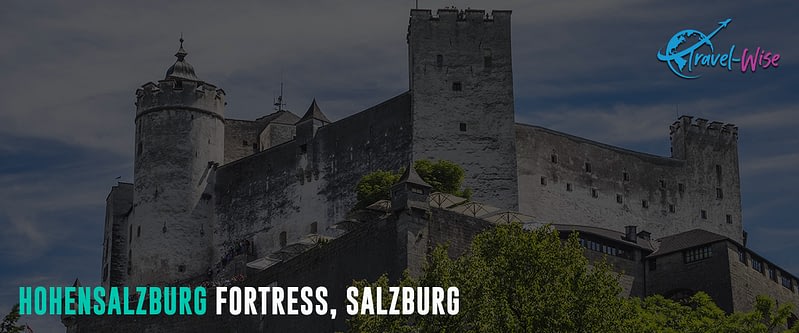
Hohensalzburg Fortress is a remarkable medieval castle perched atop Festungsberg Hill in Salzburg, Austria. It’s Central Europe’s largest fully preserved castle, boasting a 360-degree panoramic city view and surroundings. Constructed in 1077 by Archbishop Gebhard and extensively developed over the years, foreign forces have never captured the fortress, symbolizing Salzburg’s resilience.
The castle houses several captivating museums, including the Fortress Museum showcasing courtly life under the prince archbishops, the Marionette Museum, the Museum of the Rainer Regiment, and an interactive historic armory exhibition. The Princes’ Chambers, with original furnishings dating back to 1501/1502, feature the Golden Chamber with a stunning tile stove and a night sky simulation.
Visitors can embark on the Panorama Tour, from the Salt magazine to the Reckturm viewing platform. The tour continues through the battlements to the famous Salzburg Bull. The fortress offers unique experiences, such as the tower brass players’ Sunday performances and the renowned Salzburger Festungskonzerte (Fortress Concerts).
Access to the fortress is made easy by the Fortress Funicular in Festungsgasse, which has been in operation since 1892.
Hallstatt and the Dachstein Salzkammergut
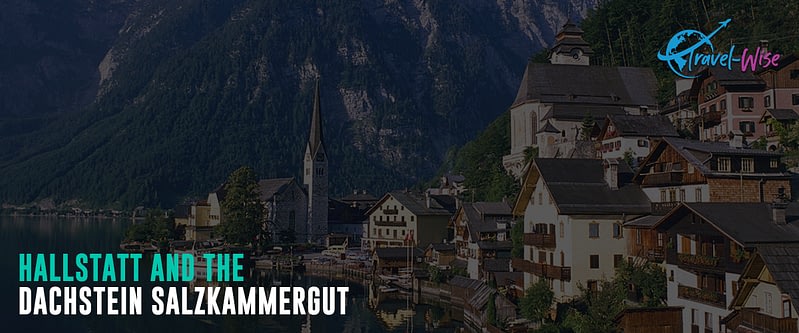
Hallstatt, one of Austria’s most picturesque small towns, is a gateway to the breathtaking Dachstein Salzkammergut region, a UNESCO World Heritage Site. This charming town village is famous for its 16th-century Alpine houses and Baroque architecture, reflecting its historic wealth derived from salt production dating back to prehistoric times.
Visitors to Hallstatt can explore the underground salt lake in the nearby Hörnerwerk cavern or venture into the impressive Dachstein Caves, which plunge as deep as 1,174 meters. Highlights include the Giant Ice Cave, with sub-zero summer temperatures and stunning frozen waterfalls, and the Mammoth Cave, featuring vast pipe-shaped galleries formed by an ancient underground river. Above ground, adventurers can experience the thrilling 5 Fingers viewing platform, suspended over a 400-meter sheer drop, offering incredible vistas of the surrounding Alps.
Travelers can take the funicular railway and the Skywalk Hallstatt platform for panoramic views. Also, a trail leads to the Echern Valley glacier garden, featuring glacial potholes and the striking Waldbachstrub Waterfall.
Grossglockner Alpine Road

The Grossglockner High Alpine Road spans 48 kilometers through the heart of the Hohe Tauern National Park in the Eastern Alps. This famous Alpine road, with 36 horseshoe bends, takes travelers to the Franz-Josefs-Höhe, offering breathtaking views of Austria’s highest peak, the Grossglockner, and the vast Pasterze glacier. Historical significance dates back over three and a half thousand years when people crossed the Alps using this route. The road reaches its highest point at Edelweißspitze (2,572 m).
The journey is a highlight, with panoramic views, exhibitions, rest areas, and family-friendly attractions. Some notable stops include Haus Alpine Naturschau, Edelweiß-Spitze, Fuscher Lacke, Hochtor, Kaiser-Franz-Josefs-Höhe Visitor Centre, and Gamsgrubenweg. The Grossglockner Alpine Road is a must for scenic drive enthusiasts, typically open from May to October and connecting Bruck in Salzburg with Heiligenblut in Carinthia.
A must for scenic drive enthusiasts, the Grossglockner Alpine Road is open from May to October due to the weather, connecting Bruck in Salzburg with Heiligenblut in Carinthia. Drop by the visitor center for informative displays on the region’s history, glacier exhibits, and general tourist information.
Golden Roof in Innsbruck
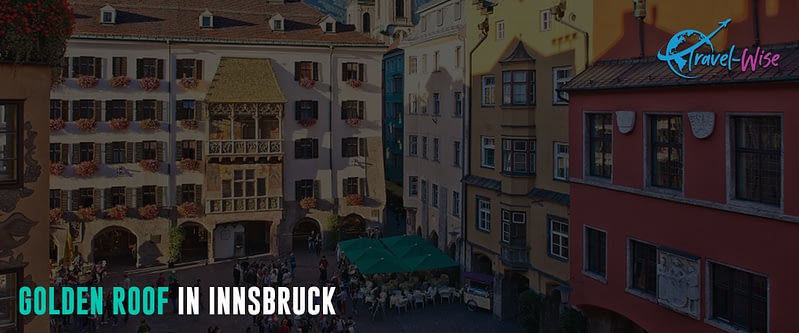
The Golden Roof in Innsbruck’s medieval town is a historic masterpiece and famous landmark. This house, commissioned by Holy Roman Emperor Maximilian I, features 2,657 gilded copper tiles that create the illusion of pure gold.
Constructed by master builder Nikolaus Türing the Elder and featuring fresco decoration attributed to Jörg Kölderer, this iconic structure boasts eighteen sandstone reliefs. These reliefs exemplify the stylistic transition from late Gothic to early Renaissance and are revered as some of Tyrol’s most significant artworks, both for their quality and motifs. While copies were introduced in 1952 to safeguard the originals, six original reliefs, meticulously restored, can be viewed up close in the museum.
Krimmler Ache
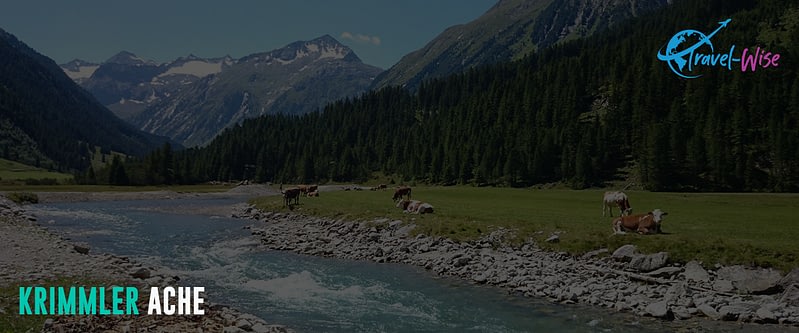
The Krimml Waterfalls is Austria’s most stunning waterfall at 380 meters. It is situated in the High Tauern National Park, Salzburg State, near the Krimml village, along the Krimmler Ache river. The waterfall has three cascades: the top and bottom sections are approximately 140 meters each, and the middle section is 100 meters. Visitors can explore these sections via a well-marked path.
The village of Krimml, perched at an altitude of 1,076 meters, serves as an excellent base for hiking enthusiasts. Aside from visiting the waterfalls, there are rewarding hikes to the Schettbrücke and the Krimmler Tauernhaus. The Waterfall Trail offers a captivating journey to the top, allowing visitors to witness the waterfalls’ grandeur. At the Krimmler Achental Valley, where the waterfalls originate, hikers can explore the Hohe Tauern National Park and the scenic region surrounding the Krimmler Ache River. This river ultimately transforms into the Salzach River, significantly shaping the area and giving nearby Salzburg its name.
Primary Spoken Language(s)
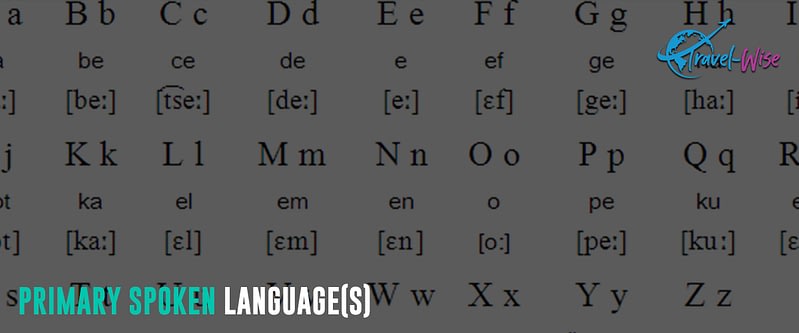
The official language in Austria is German. Other official regional languages are Hungarian, Slovene, and Croatian. Additionally, around 70% of the population speaks English, though this can significantly vary from one area to another.
Safety Concerns
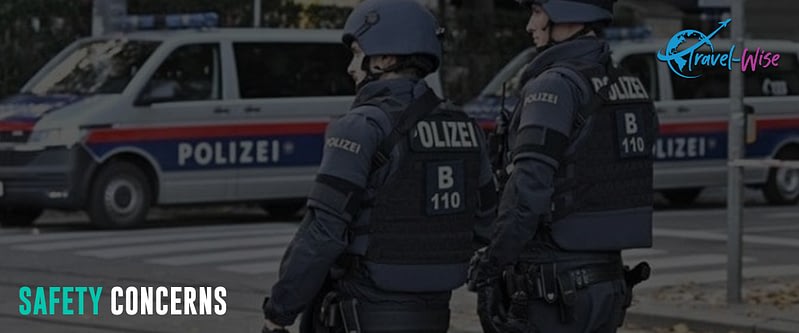
Austria ranks 5th out of 163 countries on the 2022 Global Peace Index. Also, Austria has a Level 1 Travel Advisory from the US Department of State. Hence, travelers in Austria can take standard precautions as they would do anywhere.
Austria has one of the lowest crime rates in Europe. Violent crime is rare, although crimes of opportunity and petty theft occur. Beware of bag snatching and pickpockets on public transportation and in bus or train stations. High-risk are the trains between Vienna and Budapest, Prague, and Rome. Other hotspots are the tourist areas such as St Stephen’s Cathedral, Imperial Palace, and nearby shopping areas. Hence, keep an eye on your valuables. Do not leave wallets on the table or hang bags on chairs.
For emergencies, dial 133 for the police, 122 for fire, 144 for ambulance services, 141 for Doctor-on-call, 140 for Mountain rescue, 120 for ÖAMTC emergency breakdown service, and 123 for ARBÖ emergency breakdown service. Travelers can also contact the European emergency number 112.
Budget Considerations
Although Austria has a high standard of living, traveling to this naturally beautiful country can be done on a reasonable budget. Whether traveling as a backpacker or in luxury, Austria has everything for everyone!
Accommodation
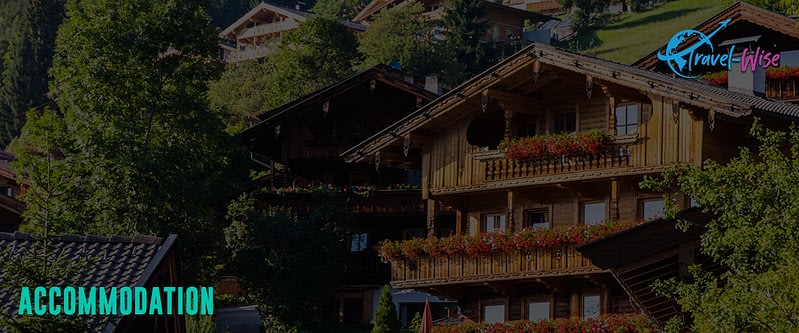
Hostels are plentiful and the cheapest accommodation option in Austria. Depending on the location, the hostel dorm bed starts at $21 per night. Expect to pay $35 to $100 for a private room in hostels and budget hotels. Free Wi-Fi is standard, many have self-cooking facilities, and some include complimentary breakfast. Travelers can also find a private room on Airbnb for $55 and an entire apartment or home for $100. In addition, visitors can enjoy the comfort of a three-star hotel for $110 or splash out on five-star hotels for $220.
Food

Austrian cuisines are meat-oriented, with soups, stews, and pastries. Breakfast usually comprises bread, cheese, and cold meats. Popular dishes include wiener schnitzel, Vienna sausage, apple strudel, goulash, tafelspitz (beef boiled in broth), and tiroler grostl.
Travelers can have Turkish, Middle Eastern, and Asian meals for as low as $6. Expect to pay $9 for a fast food combo meal, while dining out at local restaurants and beer halls is between $10 and $16. A traditional German meal costs around $16-$18, while a three-course meal costs $30.
For budget travelers, a week’s worth of groceries averages around $55. The budget can include basic staples like bread, pasta, seasonal produce, cheese, and some meat.
Attraction and Transportation
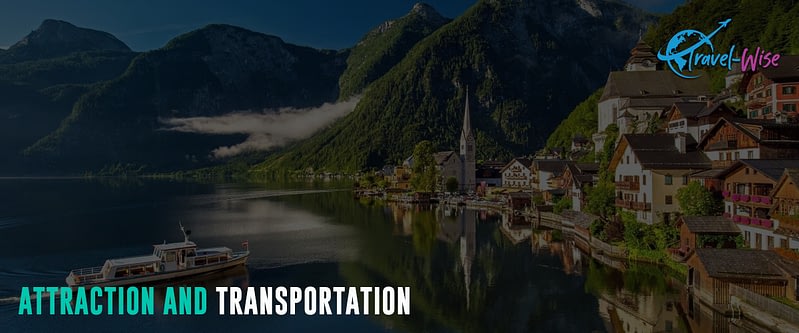
Most attractions like museums and parks have free admission in Austria. These include BauStelle, Währinger District Museum, Glasmuseum, Bezirksmuseum Mariahilf, Infobox Gloggnitz, MUSA, Döbling District Museum, Geymüllerschlössel, Pecherhütte, and Kaleidoskop. Travelers can also explore some parks and enjoy walking and hiking adventures for free. Some of the exciting parks that are worth exploring are Stadtpark in Vienna, Belvedere in Vienna, Stadionbad Wolfsberg in Wolfsberg, Stadtpark in Wolfsberg, Bauernbergpark in Linz, Donaupark in Linz, Stadtpark in Graz, Eggenberg Castle in Graz, Europapark in Klagenfurt, Park beim Sozialpädagogischen Zentrum in Klagenfurt.
Meanwhile, spending $33 on a hop-on, hop-off tour in Vienna is worth it. Travelers can also save when availing of the Vienna City Pass Tickets and Tours.
While a one-way fare on public transportation is $2.60, travelers can get a one-day unlimited city pass at around $8.60-10 and a three-day pass for $18.30. Travelers can also avail of Interrail Austria Pass for unlimited travel throughout Austria from $142.50 for three days up to $252 for eight days. Moreover, travelers can also use Global Pass for train travel in 31 European countries, including Austria.
To save on both attractions and transportation, visitors can avail of Kombitickets. It combines rail travel with a ski pass during winter or entrance to local attractions and events in summer.
Average Two-Week Cost
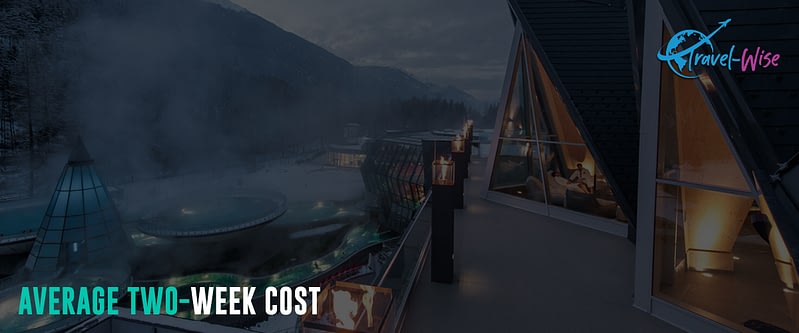
Budget travelers in Austria can live with a $70 daily or $980 for two weeks. It includes staying in hostel dorms, cooking food, occasionally dining in the local market diners, taking public transportation, visiting free attractions, and doing primarily free activities.
On the other hand, mid-range travelers spend at least $170 daily or $2380 for two weeks. The budget covers staying in three-star hotels, taking subways, trains, and occasional taxis, dining in casual restaurants, and visiting/doing a few paid activities.
Lastly, travelers can enjoy luxury in Austria from $350 daily to $4900 for two weeks. It includes staying in a five-star hotel, splashing out on meals, and renting a car for transfers. On this budget, visitors can also avail themselves of all the paid tours and activities they want. So, for them, the sky is the limit for travel.
Customs And Import Restrictions

European Union citizens carrying goods for personal use purchased within the EU are tax-free. They can enter through the blue channel when passing customs at the entry points. On the other hand, non-EU visitors entering Austria by air are entitled to a tax-free allowance worth €430 (around $468) or €300 (around $321) for all other types of travelers. It can include clothing, souvenirs, gifts, and perfumes. In addition, travelers at least 17 years old also have duty-free allowances for alcohol and tobacco products not exceeding the following:
- 200 cigarettes, 100 cigarillos, 50 cigars, 250g smoking tobacco, or a proportionate combination of these goods
- One liter of spirits (whiskey, gin, vodka, and so on) with over 22% alcohol content or 2 liters of other alcoholic drinks with less than 22% alcohol (port, sherry, sparkling wine, and some liqueurs) or a proportionate combination of these goods.
- 4 liters of non-sparkling wine;
- 16 liters of beer.
Travelers carrying €10,000 and over or its equivalent to other currency must declare it to Austrian Customs upon arrival. Otherwise, penalties will be imposed for misdeclarations.
To ensure public security and protect the life and health of human beings, the importation of animals, plants, food products, medication, weapons, and many other goods is subject to specific prohibitions and restrictions. These restrictions apply to entries from both EU and non-EU states. These include:
- provisions on the protection of endangered species
- traveling with animals
- meat and meat products, milk and dairy products, and other animal products
- plants, plant parts, fruit, vegetables, flowers, and seeds
- counterfeit products
- medicines and pharmaceutical products
- cultural goods
- firearms, ammunition, and pyrotechnic products
Visit the Austrian Customs portal for the complete list of traveler’s customs allowances, import restrictions, and prohibitions.
Climate Considerations
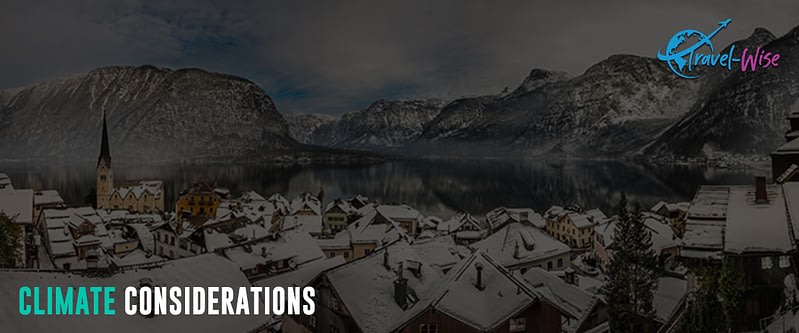
Austria is in a temperate climatic zone. The geographic location and topography also affect differences in temperature and climatic features. While the Central European climate predominates, climatic influences by the Atlantic are still noticeable.
Due to its massive expanse, Austria is divided into three different climatic regions. Firstly, the eastern part has a Pannonian climate with a continental influence. It brings low precipitation, hot summers, and moderately cold winters. Secondly, the Alpine regions have high rainfall (except the inner alpine valley regions such as the Upper Inntal), short summers, and long winters. Lastly, the remaining parts of Austria have a transient climate, Atlantic influences in the west, and a continental influence in the southeast.
Depending on the location, the average summer temperature from June to August ranges between 10 °C and 22 °C to as high as 35 °C. The shoulder season (spring and autumn) between March-May and September-November brings nice weather at 14 °C. Meanwhile, winter temperatures from December to February can drop as low as -15 °C in some areas.
Primary Transportation Options
Austria is a small country with an excellent, modern air, rail, and overland transport network. Whatever the means of transportation, travelers will find it easy to navigate in Austria.
Air
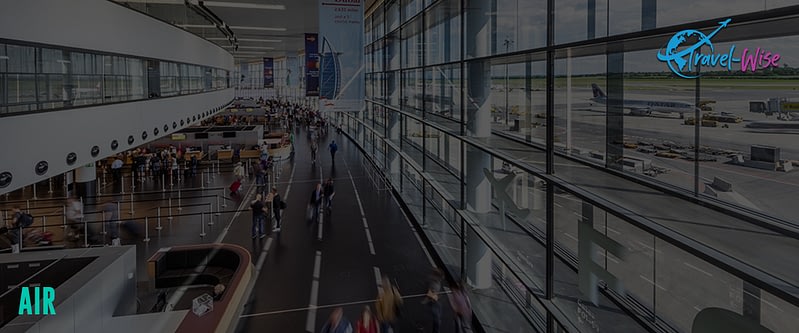
Austria is well-connected both nationally and internationally through its domestic and international airports. Vienna International Airport is the primary aviation hub, while other busy airports are Innsbruck in the Austrian Alps and Salzburg, the largest regional airport.
Austrian Airlines, part of the Lufthansa Group, is the country’s flag and largest carrier. It operates a global route network to around 130 destinations. Meanwhile, other Austria-based airlines are EasyJet, People’s, and Tyrolean Airways (a subsidiary of Austrian Airlines).
Although flying saves you time to move from places, it doesn’t apply much in Austria when you factor in the time spent going to/from the airport. In addition, the flight cost is double or sometimes triple compared to train travel.
Rail
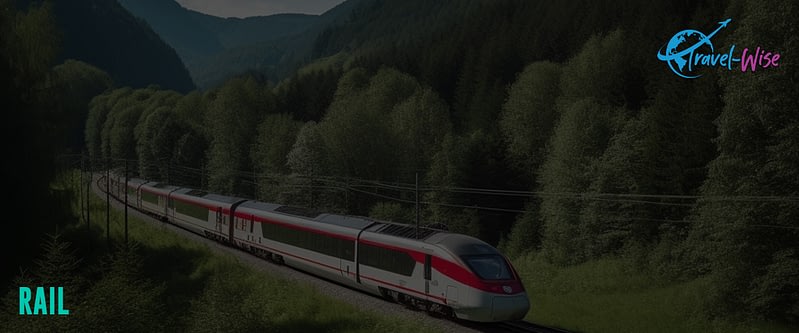
Traveling by rail is the best way to get around in Austria. They are fast, affordable, comfortable, and modern, with excellent network systems. Additionally, trains are a better way to travel through stunning alpine scenery, lush valleys, historic towns, and picturesque villages.
ÖBB-Austrian Railways maintains the national train system and offers attractive ticket options for traveling through Austria by train. For example, the ÖBB SparSchiene ticket worth €9 (around $9.60) from Vienna to Graz allows passengers to travel one way in second class. Travelers only need to book the SparSchiene ticket up to 3 days in advance.
With Kombitickets, travelers can combine rail travel with a ski pass during winter or entrance to local attractions and events in summer. To cover Austria by train, the Interrail Austria Pass gives unlimited ÖBB travel from three to eight non-consecutive days within a month. Moreover, Austria is also included in the Global Pass, which provides access to train travel in 31 countries.
Consider checking the timetable and the OBB rail schedule when planning a trip to Austria by train.
Bus
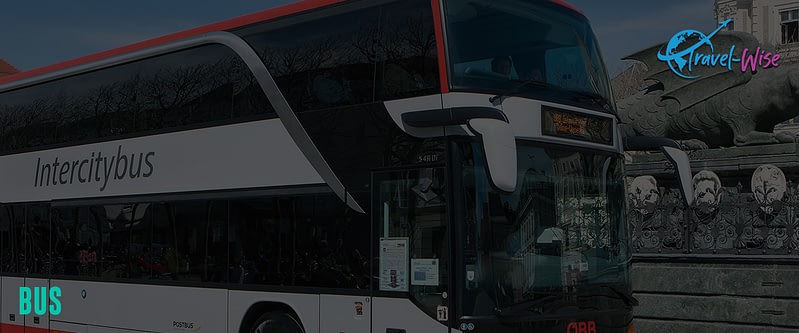
Bus and coach travel to and from Austria is a comfortable and convenient way. Thanks to the well-maintained motorways throughout Central Europe. Additionally, traveling by bus is the cheapest way to visit Austria. For example, the ride from Vienna to Graz is as low as $11, while the journey to Bratislava is $5.40.
Popular and reliable international bus operators are FlixBus, Eurolines, RegioJet, Union Ivkoni, and National Express. Their bus fleets are modern, with toilets, Wi-Fi, plug sockets, and built-in entertainment systems. Some bus companies also offer complimentary drinks and refreshments depending on the travel time.
Public Transport
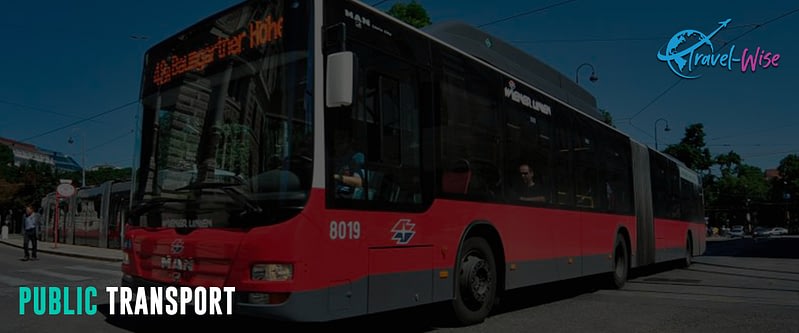
The public transportation in Austria is clean, safe, and reliable, though the services and prices vary by city. It comprises public buses, trams, subways, and local trains (S-Bahn), mainly operated by OBB within the city center. Public transport in Austria also has good connections to the flight and rail timetables network, with regular routes to and from various airports and train stations nationwide. Meanwhile, Postbust is the largest bus company in Austria and operates in areas without available public transport connections.
Expect to pay around $2.60 for a standard adult one-way ticket, and most cities offer unlimited and multi-day passes. Travelers can also avail of the 24-hour unlimited pass in Vienna for $8.60 and up to $18.30 within 72 hours.
Car
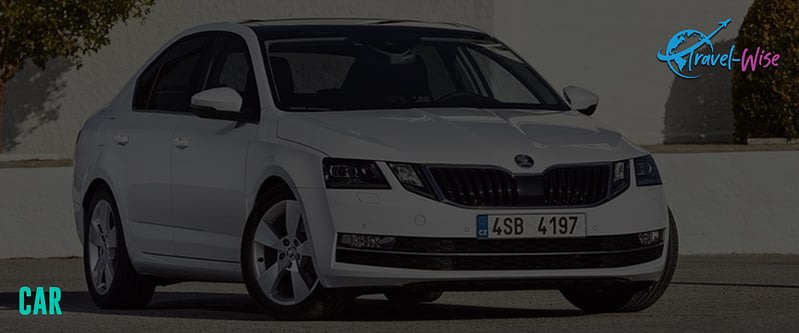
Renting a car for a few days is an excellent way to explore off-the-beaten-track destinations in Austria. Depending on the car type and model, the rate starts at $25 daily for multi-day rentals from numerous local and international companies. Aside from cars, travelers can also hire scooters and motorcycles in Austria.
Generally, Austrian traffic regulations and signals are similar to those enforced in other European countries. They drive on the right side of the road; drivers must be over 18 years old and need an international driving license. Also, travelers need a “vignette” toll sticker to drive on Austria’s motorways and expressways. Vignette is available at the border, at petrol stations, or online.
Taxi
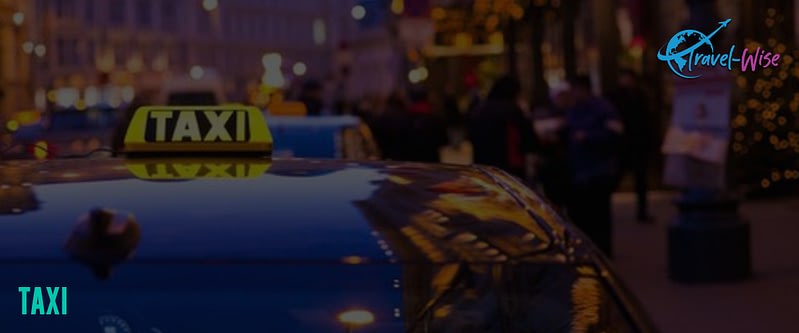
Hiring a taxi is an excellent alternative to driving in Austria. Cabs in Austria have various color schemes, but it is common to see yellow and white taxis in Vienna. They are everywhere and can be hailed at any time. Numerous airport taxis can bring visitors to their respective destinations upon arrival. Travelers can also hire taxis through mobile apps such as Uber, Wegfinder, Whim, Tyrol, and FreeNow.
Like the rest of Europe, taxi companies are heavily regulated in Austria. They are metered and expect standardized fares. Depending on the city, the basic fee is around $4. The first four kilometers will cost $1.50 each and an increment of $1.10 per kilometer afterward. Waiting time is also charged at $30 per hour; night surcharges apply between 11:00 p.m. and 6:00 a.m.
Start Trip Planning

Travel-Wise is made from the ground up to help people travel more, break down the barriers that make it tough to get going, and start your journey as painlessly as possible. Bookmark our other Country Guides to help kick-start your research for future travels. We also offer templated itineraries from our staff and community that help serve as a building block for your trip plans. Alternatively, we also utilize AI to offer a way to generate itinerary ideas. This saves much time just getting you up and running with a template. From there, you can use the trip planner to create your customized itinerary, invite friends and family for collaboration, find others from Travel-Wise to join the trip, book and track important information, journal, and share your experiences at the end or along the way!

